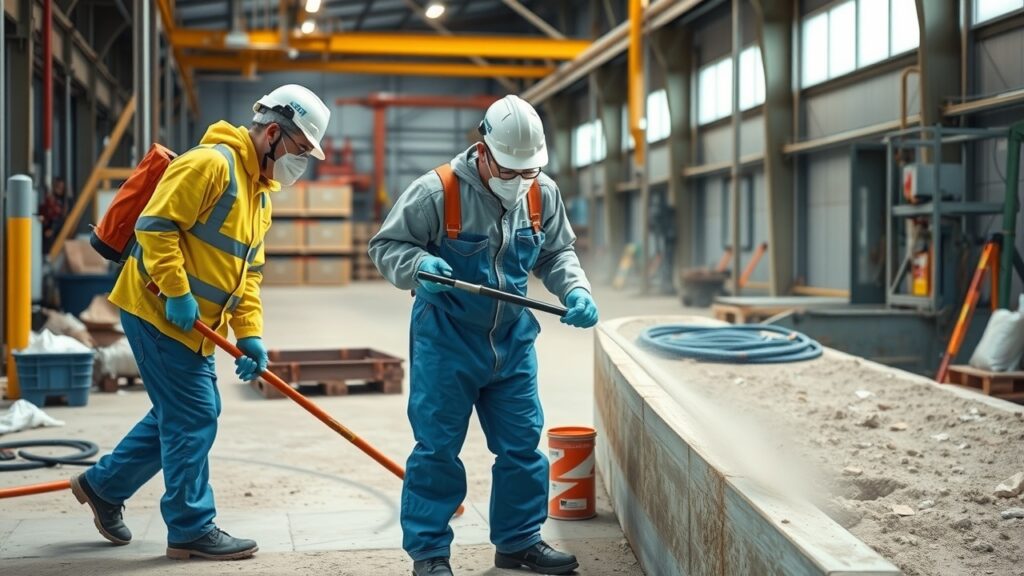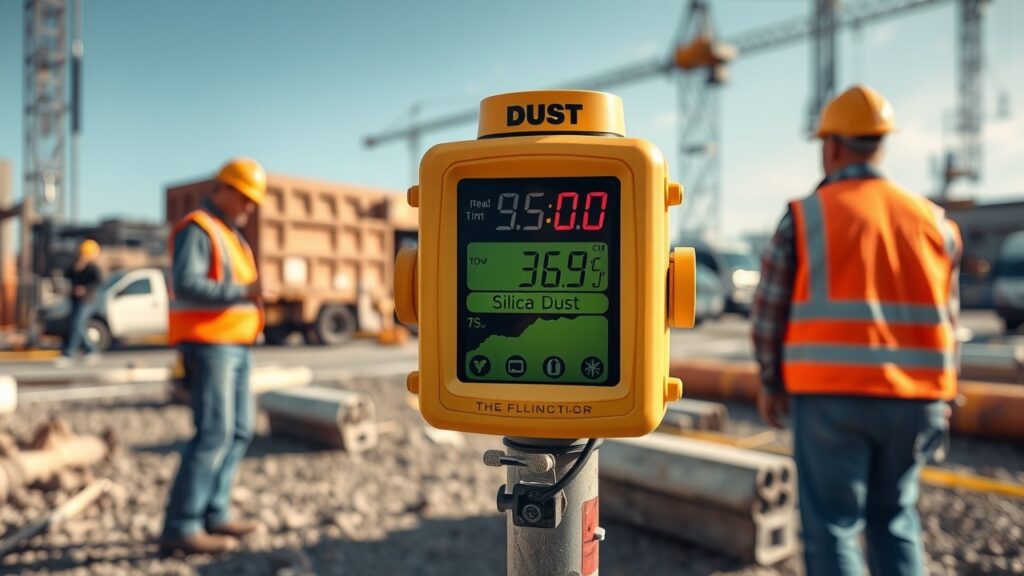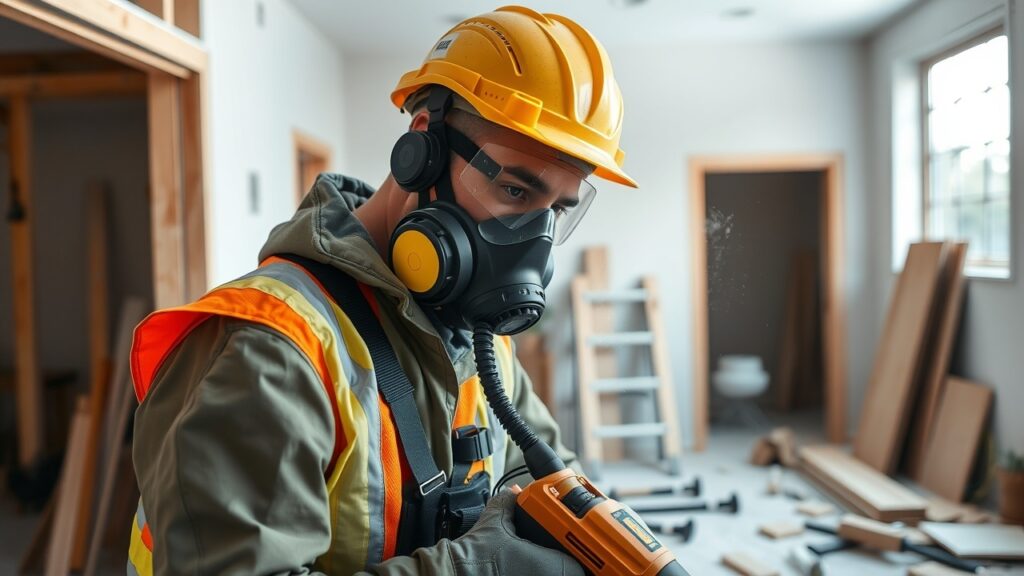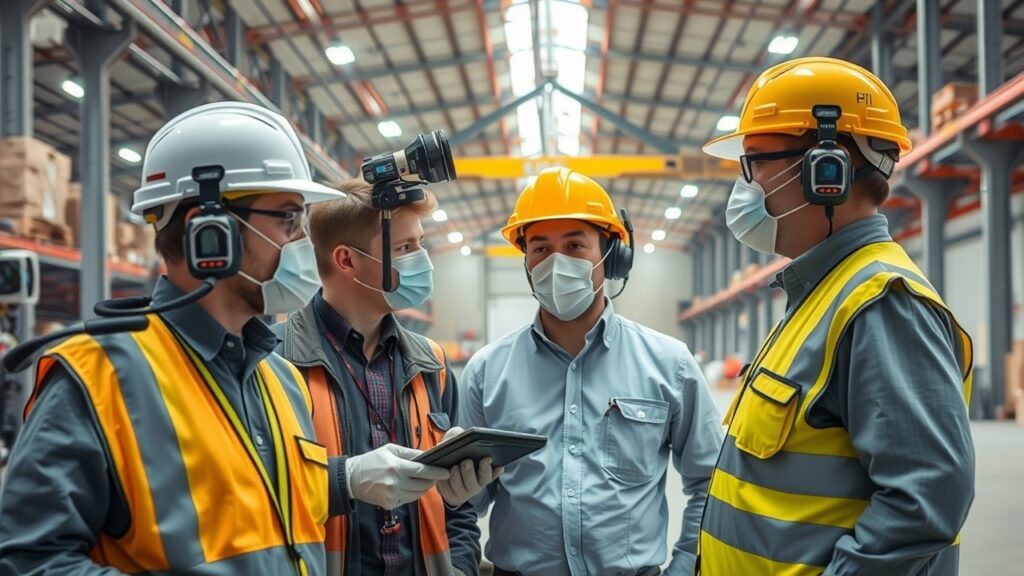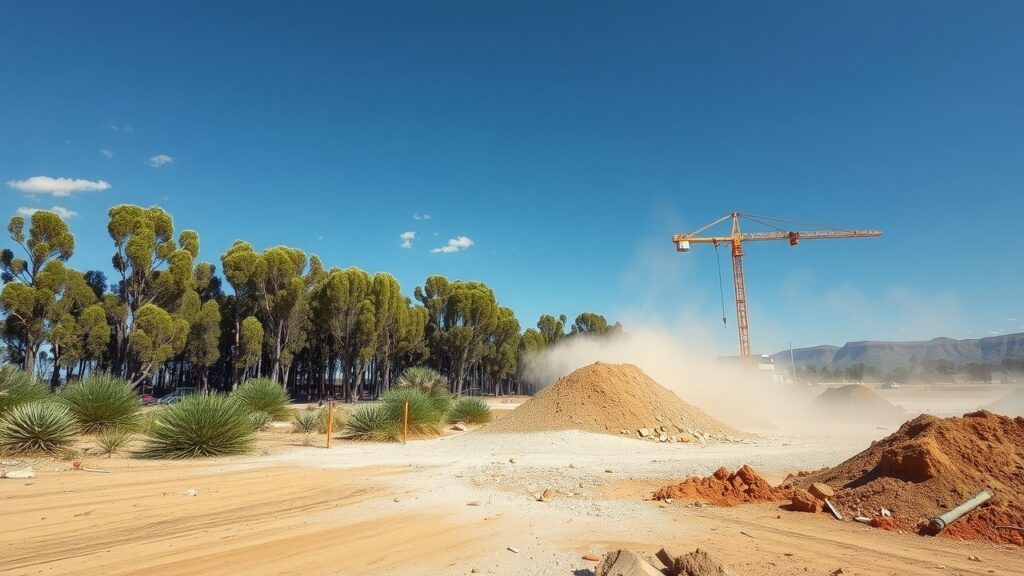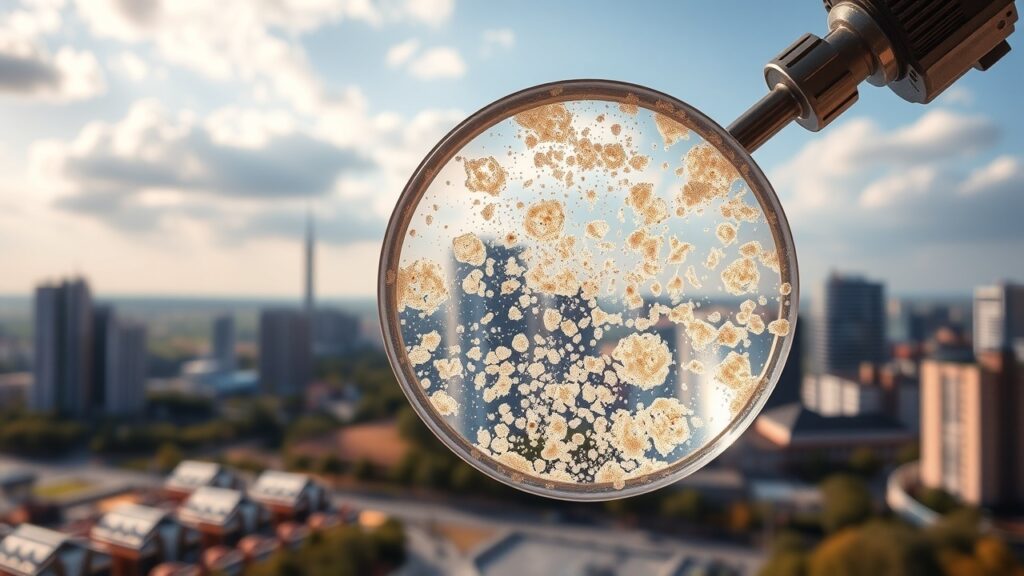Silica Dust Removal & Management Services – Capstone Civil Group
At Capstone Civil Group, we prioritize your safety and well-being with our comprehensive Silica Dust Removal & Management services. Silica dust, a common byproduct of construction and industrial activities, poses significant health risks, including respiratory issues and long-term lung diseases.
Understanding the Strategies
Comprehensive Silica Dust and Removal Strategies
Our comprehensive silica dust containment and removal strategies at Capstone Civil Group are designed to keep your project safe and efficient.
We focus on the latest methods to minimize dust during construction, ensuring a healthier atmosphere for everyone involved.
| Health Risks | Short-term Effects | Long-term Effects |
|---|---|---|
| Silicosis | Irritated eyes, coughing, trouble breathing | Chronic cough, respiratory infections, lung cancer |
| Lung Cancer | N/A | Increased risk with prolonged exposure |
| Kidney Disease | N/A | Linked to ongoing silica exposure |
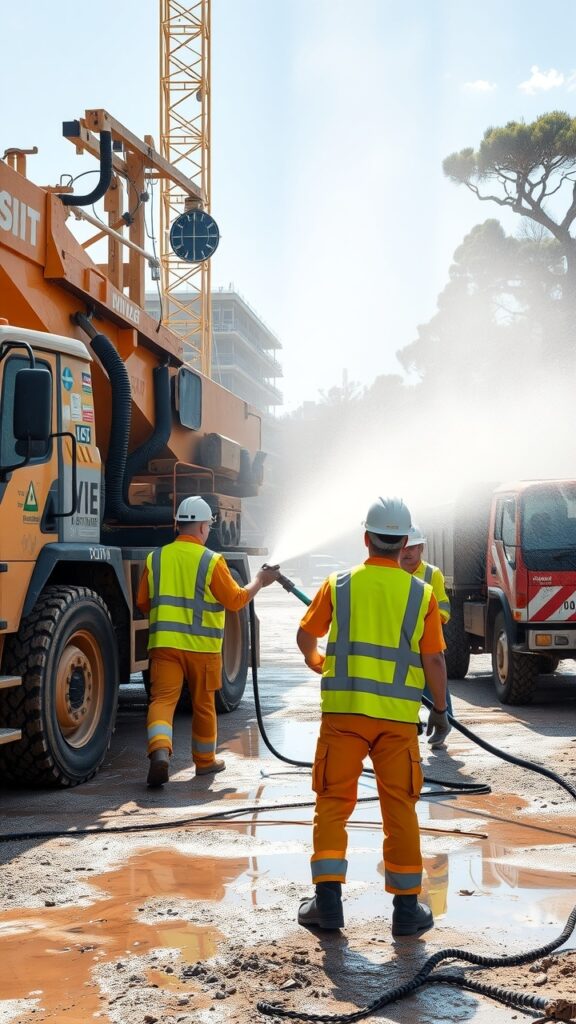
Silica Dust – A Workplace Hazard
Silica dust is a big workplace danger. It can cause serious health risks for workers in different industries. This fine dust comes from activities like cutting, grinding, or drilling materials that have silicon dioxide. Knowing about silica dust is key to keeping workers safe.
Types of Silica Dust
There are two main types of silica dust: crystalline and amorphous.
- Crystalline Silica: This is found in materials like quartz. Breathing it in over time can lead to serious health problems.
- Amorphous Silica: While not as harmful as crystalline silica, it still needs careful management to reduce exposure risks.
Both types can easily become airborne during construction or manufacturing work. So, it’s really important to manage and control them properly.
Silica Dust Monitoring and Testing
Monitoring and testing for silica dust is really important for keeping workers safe. Regular air checks help figure out how much respirable crystalline silica is in the air. This is key in places where workers deal with hazardous materials. To get a clear picture, we use personal sampling and area sampling techniques.

Personal Sampling Techniques
Personal sampling gives workers portable devices to measure how much silica they breathe in while doing their jobs. This method helps gather precise data on each person’s exposure level. By knowing these levels, employers can decide if workers need protective gear like respirators.
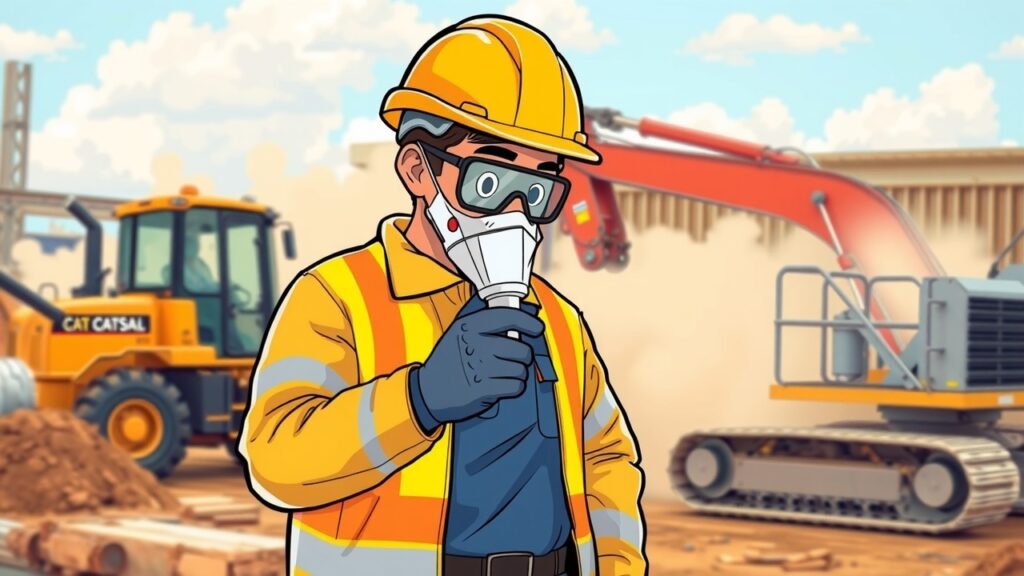
Area Sampling Techniques
Area sampling looks at the amount of silica dust in specific work areas. Employers put samplers in spots where there’s a higher risk, like near cutting or grinding tasks. This way, they can keep track of the air quality in those zones and see if more dust control measures are needed.

Analytical Methods for Silica Detection
After gathering samples from both personal and area methods, different analytical techniques help determine how much silica is present. One common technique is X-ray diffraction (XRD), which identifies the crystalline structure of silica in samples.

Interpretation of Results
Understanding test results is vital for meeting regulations and developing effective control strategies. Employers should compare findings against OSHA standards for permissible exposure limits (PELs). If any results show that silica levels are too high, prompt action must be taken to lower those risks.

Health Implications and Medical Management
Silica dust exposure can cause serious health issues. Short-term effects include eye irritation, coughing, and a sore throat. These signs stress the need for good respiratory protection to limit initial exposure.
Health Risks Associated with Silica Dust Exposure
Exposure to respirable crystalline silica poses significant health risks, making it crucial to implement effective protective measures in workplaces handling hazardous materials. Inhaling tiny particles of crystalline silicon dioxide can lead to silicosis, a progressive lung disease characterized by symptoms such as coughing and difficulty breathing.
Long-term exposure significantly raises the risk of developing lung cancer and has been linked to kidney disease. Even short-term exposure to high levels of silica dust can cause immediate effects, including irritated eyes, coughing, and trouble breathing. Over time, continued exposure can result in more severe health issues, such as the development of silicosis, an increased likelihood of respiratory infections, and a heightened risk of lung cancer.
Understanding these severe health implications underscores the importance of diligent silica dust removal and management to ensure a safe and healthy work environment.
Best Practices for Silica Dust Control
Managing silica dust is vital for keeping workers safe, especially in industries like construction and mining. Here’s a look at effective strategies to cut down exposure to harmful silica dust.
Specific Industry Guidelines for Silica Dust Management
Each industry has its own challenges when it comes to silica dust control. It’s important to create specific guidelines that follow safety regulations:
- Construction – Using wet cutting methods during masonry work can really help reduce airborne dust. Water sprays or misters on demolition sites are great for keeping dust down.
- Mining – In mining, try to use enclosed processes whenever you can. Negative air pressure systems in underground areas trap harmful particles in one spot.
- Manufacturing – In manufacturing, it’s super important to maintain machines that have extraction systems. Regular checks ensure these systems capture fine particles effectively.
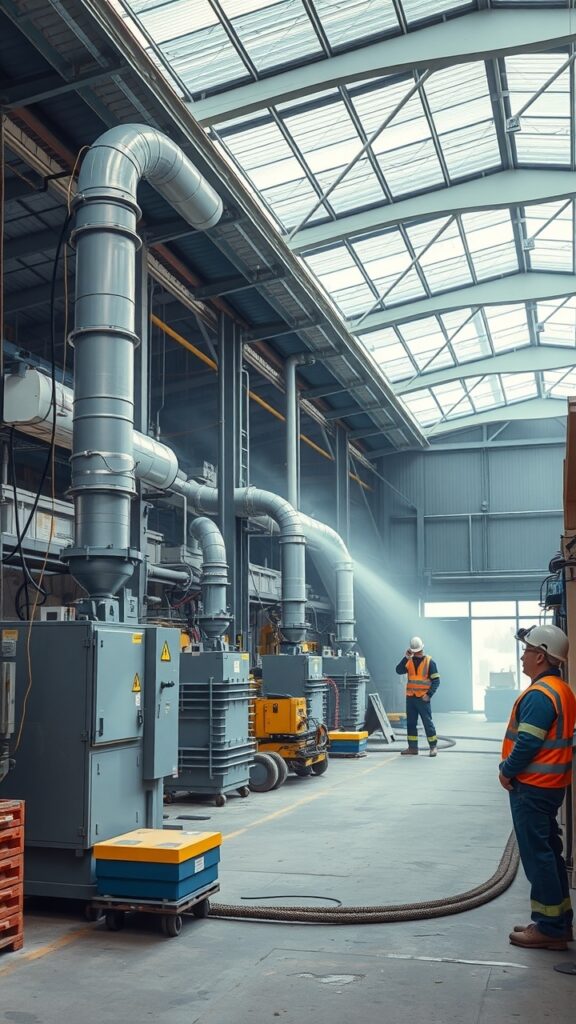
OSHA Regulations and Guidelines for Silica Dust Exposure Limits
The Occupational Safety and Health Administration (OSHA) has set strict rules about the safe limits for airborne concentrations of respirable crystalline silica. These regulations aim to protect workers and ensure that companies follow best practices in workplace safety.
Employers need to take action by regularly monitoring air quality. They should also provide proper training on safe handling practices for hazardous materials. Sticking to these regulations helps create safer work environments and reduces legal risks related to workplace hazards.
Grasping the facts about silica dust—its types and health risks—is very important for any organization wanting to keep their workers safe while following all safety rules.
Innovative Technologies for Dust Suppression and Filtration
Using new tech can really boost air quality management at work sites and improve silica dust control:
- High-Efficiency Particulate Air (HEPA) Filters: HEPA filters catch 99.97% of airborne particles that are larger than 0.3 microns. Adding HEPA filtration to ventilation systems gives extra protection against respirable crystalline silica.
- Dust Collectors: Central vacuum systems with high-capacity collectors keep large areas clean by sucking up debris efficiently, which helps make the workplace safer.
- Portable Dust Collectors & Vacuum Systems: These handy tools give workers flexibility while ensuring a clean working space even in hard-to-reach spots or smaller job sites.
Dust Removal Equipment
Choosing the right equipment is a big part of effective silica control measures:
- Industrial Vacuums: These vacuums are built for heavy-duty work where fine particles need removal from both air and surfaces. They come with special attachments that make them ideal for tasks like grinding or sanding.
- Trailer-Mounted & Skid-Mounted Vacuums: Perfect for outdoor projects, these vacuums offer mobility and strong suction power, boosting efficiency during clean-up after major activities like blasting or excavation.
Overall, sticking to best practices specific to each industry along with smart technologies helps lower the health risks tied to silica exposure. By keeping a close eye on compliance requirements and focusing on safety standards, workplaces can create a safer environment for everyone involved.
Trust Us for Comprehensive Silica Dust Removal & Management
With years of experience and an unwavering commitment to excellence, we are your trusted partner in creating a healthier, safer, and compliant workplace. Don’t compromise on safety—reach out to us today to learn more about our comprehensive silica dust removal and management services.
FAQs – Silica Dust Removal & Management
Capstone Civil Group’s Solutions for Silica Dust Control
At Capstone Civil Group, we know that managing silica dust is really important for keeping workplaces safe. Our methods are designed to deal with the unique problems caused by airborne silica in different industries.
Risk Assessment and Site Evaluation
We start with a risk assessment and site evaluation to spot possible sources of silica exposure. This means looking closely at existing processes that can create crystalline or amorphous silica dust. Whether it’s construction sites in Greater Sydney or mining operations in Queensland, we adapt our solutions to fit.
We also look at environmental regulations and how hazardous materials are handled. This helps us find all potential risks linked to silica exposure. Knowing these details allows us to create strategies that meet local and national compliance requirements.
Customized Solutions Tailored to Projects
We understand that each project has its own needs when it comes to silica dust management. Our team designs specific solutions just for you. We use a mix of engineering controls, like:
- Local Exhaust Ventilation Systems: These systems catch dust right at its source, helping cut down on airborne particles.
- Wet Suppression Techniques: Adding water helps keep dust from flying around, reducing health risks tied to silica.
We also put in place administrative controls, like job rotation policies. These practices help make sure workers aren’t constantly exposed to harmful materials, leading to a safer and more productive workplace.
Health and Safety Professionals
Working together is key for us when it comes to controlling silica dust. We team up with qualified health and safety professionals so all areas of silicosis prevention are covered. This teamwork is crucial for building an effective occupational health and safety plan.
As part of this collaboration, we provide ongoing training for employees on important topics like respiratory protection methods. We make sure workers know how to use respirators properly when dealing with dust particles. This commitment to training helps keep high standards of health and safety in the workplace.
Benefits of Partnering for Silica Dust Control
Choosing us as your partner for managing silica dust brings many benefits:
- Safe Work Environment: Meeting OSHA regulations creates a safer place for all employees.
- Enhanced Worker Health: Better health outcomes lead to higher productivity and morale.
- Reduced Liability Risks: Effective mitigation strategies help reduce risks linked to non-compliance.
Plus, we aim beyond just following rules. We’re focused on innovation in air quality management through new technologies like HEPA filters and portable vacuum systems specifically made for construction dust control situations.
By addressing both immediate needs—like good dust control methods—and long-term goals—such as sustainable practices—we protect workers while improving overall efficiency in any industry dealing with airborne contaminants today!

